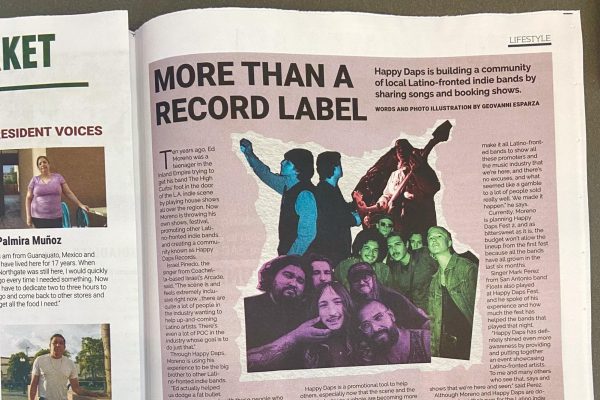How does Halloween affect your health?
Target, along with other popular retailers, sells a variety of holiday candy.
October 13, 2019
For decades, Americans have celebrated Halloween by dressing up in costumes and handing out candy to kids. Obviously too much sugar isn’t good for kids – or for anyone – but how much Halloween candy should you let your kids eat?
According to recommendations by the American Heart Association, kids ages two to 18 should consume less than 25 grams of sugar each day.
According to the Milky Way website, one fun-size bar has 21 grams of sugar. And other popular candies are not far behind; Reese’s Peanut Butter Cups have 22 grams of sugar, a small packet of Skittles has 34 grams and there are 15 grams in fun-size Twix bars.
In other words, after walking around the neighborhood collecting candy from neighbors and friends, your child is hardly able to eat one fun-size Milky Way bar to stay under the recommended consumption – and frankly, that’s just not realistic.
Adults who want to join in on the fun are recommended by the AHA to only eat 38 grams of sugar if you are a male or 25 grams of you are a female – so maybe you can eat one-and-a-half pieces of the Halloween candy you bought.
Evidently, though, just eating one piece of candy is not realistic for Americans.
Each year, my siblings and I would gather a group of friends to trick-or-treat, and spend hours stopping through different neighborhoods to try to get the most candy we possibly could. When the night was over, we would trade for our favorite candies and eat too much sugar before bed.
According to a 2013 study done by Coupon Follow, kids eat nearly 384 grams of sugar on Halloween night, which is just over 15 times the amount kids are supposed to consume.
However, Halloween night is not the only time when sugar highs run rampant.
According to a 2016 Global News article, American children typically eat around 95 grams of sugar a day, nearly four times as much as they should have.
So, while sugar intakes for Americans surely spike on Halloween night, they scarcely get low enough to be what the AHA considers a healthy level.
Over the last decade, Americans have been seeing the effects of high sugar levels, including a rise in diabetes and obesity.
According to hsph.harvard.edu, “roughly two out of three U.S. adults are overweight or obese (69 percent)…[and] one out of six children and adolescents ages 2-19 are obese.”
The risks associated with eating too much sugar don’t just stop at obesity and diabetes; serious dental problems can also occur.
With such issues, parents are eager to curb the candy-binge.
More recently, some parents let their child trade in their candy for a toy, others portion the candy to last throughout the year in order to take a healthier approach to a holiday that is most definitely not healthy.
While the issues of diabetes and obesity have been on the rise for years, parents took a vastly different approach when I was growing up. Most parents didn’t really care that we were eating so much candy – that’s what Halloween is for.
While parents are rightly concerned about what their kids are eating, as long as they’re engaging in healthy habits for the rest of the year, one night of trick-or-treating isn’t likely to drastically impact their health or eating habits.






